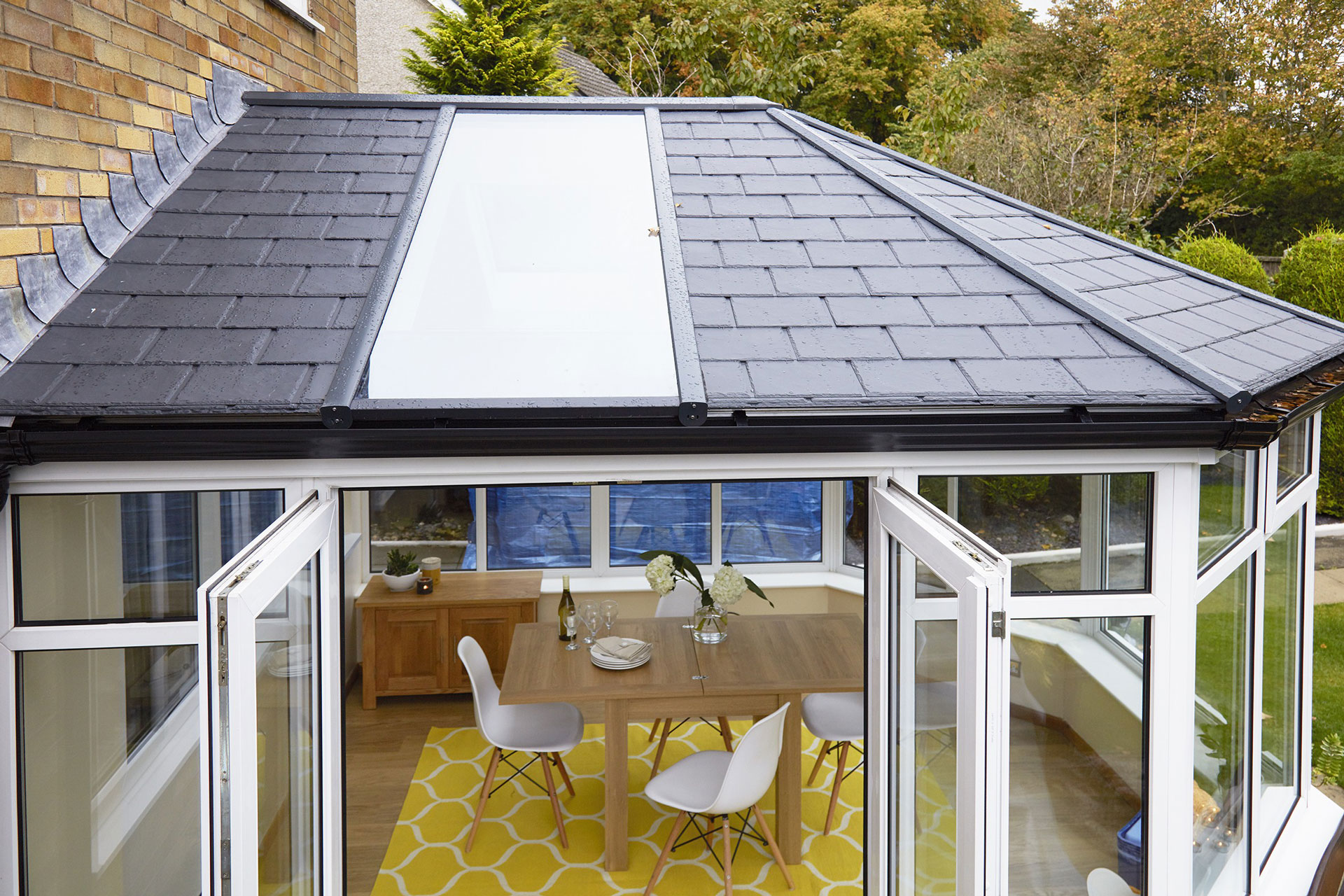Why Conservatory Roofs Fail in the UK
Climate-Driven Wear and Tear
-
Rain and Moisture: The UK’s frequent rainfall seeps through cracks in aging seals, leading to rot in wooden frames or rust in metal supports. Polycarbonate panels, once popular, often degrade here—UV exposure makes them brittle, while condensation trapped between layers breeds mold.
-
Temperature Fluctuations: Summers bring intense sunlight that overheats poorly insulated roofs; winters bring cold that turns conservatories into ice boxes. This expansion and contraction weaken joints.
-
Wind Damage: Coastal areas or exposed homes face strong gales that loosen tiles or dislodge panels, creating leaks that worsen over time.
Signs It’s Time to Replace
-
Persistent Leaks: Even small drips after rain mean seals are failing—ignoring them can damage flooring or structural timbers.
-
Uneven Temperatures: If the space is uninhabitable in July or January, insulation is no longer effective.
-
Visible Damage: Cracked panels, loose tiles, or sagging frames are red flags—delaying replacement risks bigger repairs.
Roof Types for UK Conservatories: Beyond the Basics
Insulated Panels with a Twist
Modern insulated roofs go beyond basic foam cores. Many now include reflective layers to bounce summer heat and multi-layered insulation to trap winter warmth. Brands like Supalite or Warm Roof offer “cold roof” options (ventilated to prevent condensation) and “warm roof” designs (fully sealed for maximum efficiency)—critical for UK humidity. They’re lightweight, fitting most conservatory frames without extra structural support.
Tiled Roofs: More Than Aesthetics
Tiled roofs, often made from lightweight concrete or clay, aren’t just for traditional homes. Newer “interlocking” tiles (e.g., from Metrotile) reduce water ingress, a boon for rainy regions. They blend seamlessly with home exteriors, avoiding the “add-on” look, and their density muffles rain noise—ideal for light sleepers near the conservatory.
Solar-Integrated Roofs
A growing trend in the UK: roofs with built-in solar panels. Companies like Kloeber offer tiles with integrated photovoltaics (PV) that generate electricity while insulating. They’re pricey but align with the UK’s push for renewable energy, potentially cutting energy bills—useful given rising utility costs.
Performance vs. Cost: A New Perspective
|
Roof Type
|
Insulation Rating (U-value, W/m²K)
|
Noise Reduction (dB)
|
Lifespan (Years)
|
Annual Maintenance Cost (GBP)
|
|
Insulated Panels
|
0.18-0.25
|
30-40
|
25-30
|
50-100
|
|
Tiled (Concrete)
|
0.20-0.30
|
40-50
|
30-40
|
100-150 (tile checks, sealing)
|
|
Solar-Integrated Tiles
|
0.22-0.28
|
35-45
|
25-30
|
150-200 (panel checks)
|
|
Polycarbonate (Legacy)
|
1.2-2.0
|
10-15
|
10-15
|
30-60 (panel replacement)
|
Data source: UK Building Research Establishment (BRE) 2025, based on average UK conditions
Navigating UK Regulations and Logistics
Planning Permission Myths
Most conservatory roof replacements don’t need planning permission in England—if the new roof is the same height and shape as the original, and the conservatory is attached to a house (not a listed building). Wales, Scotland, and Northern Ireland have similar rules, but always check with your local council via the Planning Portal.
Choosing a Contractor
-
Certifications Matter: Look for contractors certified by bodies like FENSA (for window/roof installations) or TrustMark (government-endorsed). These ensure compliance with Building Regulations (Part L for energy efficiency).
-
Warranties: A good installer offers 10+ years on materials and 5+ on labor. Avoid firms with vague “lifetime” guarantees—they rarely hold up.
QA: UK-Specific Concerns
Q1: Will replacing my conservatory roof affect my home insurance?
A1: It might lower premiums—new roofs reduce risks of water damage. Inform your insurer; some require proof of professional installation to maintain coverage.
Q2: Can I install a green roof on my conservatory?
A2: Small green roofs (with sedum) are possible but need structural checks—they add weight. They work best on low-pitch conservatories in sheltered areas.
Q3: How do I prevent condensation in a new roof?
A3: Choose a roof with proper ventilation (e.g., insulated panels with air gaps) or a vapor barrier. Good airflow stops moisture buildup, critical in the UK’s damp climate.
Q4: Is it worth upgrading to a tiled roof if my conservatory is small?
A4: Yes—tiles add value and reduce long-term costs. Even a 3m x 4m conservatory will benefit from better insulation and noise reduction.
Q5: When’s the best time to replace a conservatory roof in the UK?
A5: Spring or early autumn—milder weather avoids winter delays (frost can halt installation) and summer heat (which makes materials harder to handle).

